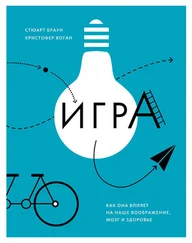Rentfrow, P.J. (2012), ‘The role of music in everyday life: Current directions in the social psychology of music’, Social and Personality Psychology , 6 (5), 402–416.
Salimpoor, V.N., et al. (2011), ‘Anatomically distinct dopamine release during anticipation and experience of peak emotion to music’, Nature Neuroscience , 14, 257–262.
Janata, P., Tomic, S.T., and Rakowski, S.K. (2007), ‘Characterisation of music-evoked autobiographical memories’, Memory , 15, 845–860.
Janata, P. (2009), ‘The neural architecture of music-evoked autobiographical memories’, Cerebral Cortex , 19 (11), 2579–2594.
(Sittin’ on) the Dock of the Bay («Сидя на причале в заливе») – Отис Реддинг, Across the Universe («Через Вселенную») – Beatles, Bachata Rosa («Розовая бачата») – Хуан Луис Герра, Mr Tambourine Man («Мистер с тамбурином») – The Byrds, Piece of my Heart («Кусочек моего сердца») – Big Brother and the Holding Company (солирует Дженис Джоплин). Bachata Rosa явно выбивается из этого ряда.
The Moors («Вересковая пустошь») – Weather Report, If You Want Me To Stay («Если ты хочешь, чтобы я остался») – Слай Стоун, Concrete Jungle («Бетонные джунгли») – Wailers, September Gurls («Девушки сентября») – Big Star Алекса Чилтона, Be My Baby («Будь моим любимым») – The Ronettes, Every Day («Каждый день») – Бадди Холли.
Altenmüller, E., and Schlaug, G. (2012), ‘Music, Brain and Health: Exploring Biological Foundations of Music’s Health Effect’, in R.A.R. MacDonald, G. Kreutz and L. Mitchell (eds.), Music, Health, & Wellbeing. Oxford: Oxford University Press.
Maguire, E.A., Woollett, K., and Spiers, H.J. (2006), ‘London taxi drivers and bus drivers: A structural MRI and neuropsychological analysis’, Hippocampus, 16 (12), 1091–1101.
Driemeyer, J., et al. (2008), ‘Changes in gray matter induced by learning – revisited’, PLOS ONE, 3 (7), e2669.
Stewart, L. (2008), ‘Do musicians have different brains?’, Clinical Medicine, 8, 304–308. Barrett, K.C., Ashley, R., Strait, D.L., and Kraus, N. (2013) Art and Science: How Musical Training Shapes the Brain. Frontiers in Auditory Cognitive Neuroscience, 4, 713.
Hyde, K.L., et al. (2009), ‘The effects of musical training on structural brain development: a longitudinal study’, Annals of the New York Academy of Sciences, 1169, 182–186. Hyde, K.L., et al. (2009), ‘Musical Training Shapes Structural Brain Development’, Journal of Neuroscience, 29 (10), 3019–3025.
Schlaug, G., Jancke, L., Huang, Y., and Staiger, J.F. (1995), ‘Increased corpus callosum size in musicians’, Neuropsychologia, 33 (8), 1047–1055.
Westerhausen, R., et al. (2006), ‘Interhemispheric transfer time and structural properties of the corpus callosum’, Neuroscience Letters, 409 (2), 140–145. Patston, L.L.M, et al. (2007), ‘The unusual symmetry of musicians: Musicians have equilateral interhemispheric transfer for visual information’, Neuropsychologia, 45 (9), 2059–2065.
Ridding, M.C., Brouwer, B., and Nordstrom, M.A. (2000), ‘Reduced interhemispheric inhibition in musicians’, Experimental Brain Research, 133, 249–253.
Bengtsson, S.L., et al. (2005), ‘Extensive piano practicing has regionally specific effects on white matter development’, Nature Neurosciences, 8, 1148–1150.
Halwani, G.F., Loui, P., Rueber, T, and Schlaug, G. (2011), ‘Effects of practice and experience on the arcuate fasciculus: comparing singers, instrumentalists, and non-musicians’, Frontiers in Psychology, 2, 156.
Stewart, L. (2008), ‘Do musicians have different brains?’, Clinical medicine, 8 (3), 304–308.
Ragert, P., Schmidt, A., Altenmüller, E, and Dinse, H.R. (2004), ‘Superior tactile performance and learning in professional pianists: evidence for meta-plasticity in musicians’, European Journal of Neuroscience, 19 (2), 473–478.
Watanabe, D., Savion-Lemieux, T., and Penhune, V.B. (2007), ‘The effect of early musical training on adult motor performance: Evidence for a sensitive period in motor learning’, Experimental Brain Research, 176 (2), 332–340.
Amunts, K., et al. (1997), ‘Motor cortex and hand motor skills: Structural compliance in the human brain’, Human Brain Mapping, 5 (3), 206–215.
Bangert, M., and Schlaug, G. (2006), ‘Specialization of the specialized in features of external human brain morphology’, European Journal of Neuroscience, 24 (6), 1832–1834.
Pantev, C., Engelien, A., Candia, V., and Elbert, T. (2001), ‘Representational Cortex in Musicians: Plastic Alterations in Response to Musical Practice’, Annals of the New York Academy of Sciences, 930 (1), 300–314.
Elbert, T., et al. (1995), ‘Increased cortical representation of the fingers of the left hand in string players’, Science, 270 (5234), 305–307.
Schneider, P., et al. (2002), ‘Morphology of Heschl’s gyrus reflects enhanced activation in the auditory cortex of musicians’, Nature Neuroscience, 5 (7), 688–694.
Gaab, N., et al. (2005), ‘Neural correlates of rapid spectrotemporal processing in musicians and nonmusicians’, Annals of the New York Academy of Sciences, 1060, 82–88. Musacchia, G., Strait, D., and Kraus, N. (2008), ‘Relationships between behavior, brainstem and cortical encoding of seen and heard speech in musicians and nonmusicians’, Hearing Research, 241 (1–2), 34–42.
Strait, D., and Kraus, N. (2011), ‘Playing music for a smarter ear: cognitive, perceptual and neurobiological evidence’, Music Perception, 29 (2), 133–146.
Pantev, C., et al. (1998), ‘Increased auditory cortical representation in musicians’, Nature, 392 (6678), 811–814.
Pantev, C., et al. (2001), ‘Timbre-specific enhancement of auditory cortical representations in musicians’, Neuroreport, 12 (1), 169–174.
Strait, D.L., et al. (2012), ‘Specialization among the specialized: auditory brainstem function is tuned in to timbre’, Cortex, 48 (3), 360–362.
Wong, P.C.M., et al. (2007), ‘Musical Experience Shapes Human Brainstem Encoding of Linguistic Pitch Patterns’, Nature Neuroscience, 10 (4), 420–422.
Slevc, L.R., and Miyake, A. (2006), ‘Individual differences in second language proficiency: Does musical ability matter?’, Psychological Science, 17 (8), 675–681.
Читать дальше
Конец ознакомительного отрывка
Купить книгу


![Виктория Токарева - Тихая музыка за стеной [сборник]](/books/34306/viktoriya-tokareva-tihaya-muzyka-za-stenoj-sbornik-thumb.webp)



![Аре Бреан - Музыка и мозг [Как музыка влияет на эмоции, здоровье и интеллект]](/books/398841/are-brean-muzyka-i-mozg-kak-muzyka-vliyaet-na-emoc-thumb.webp)





